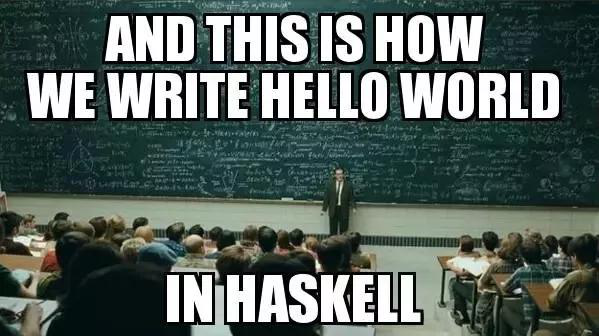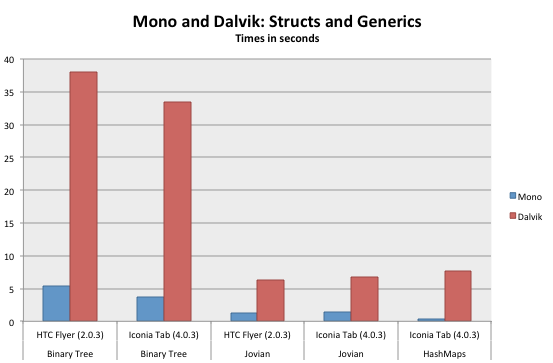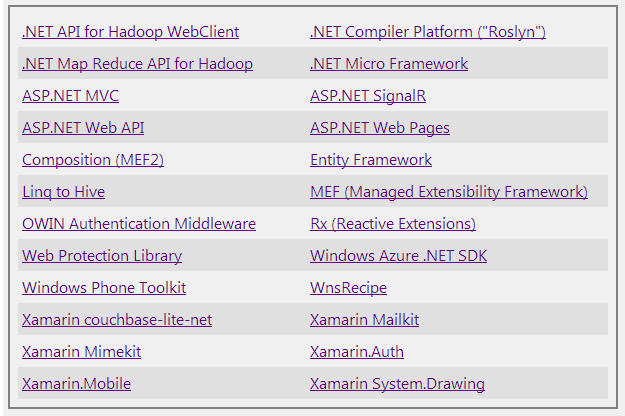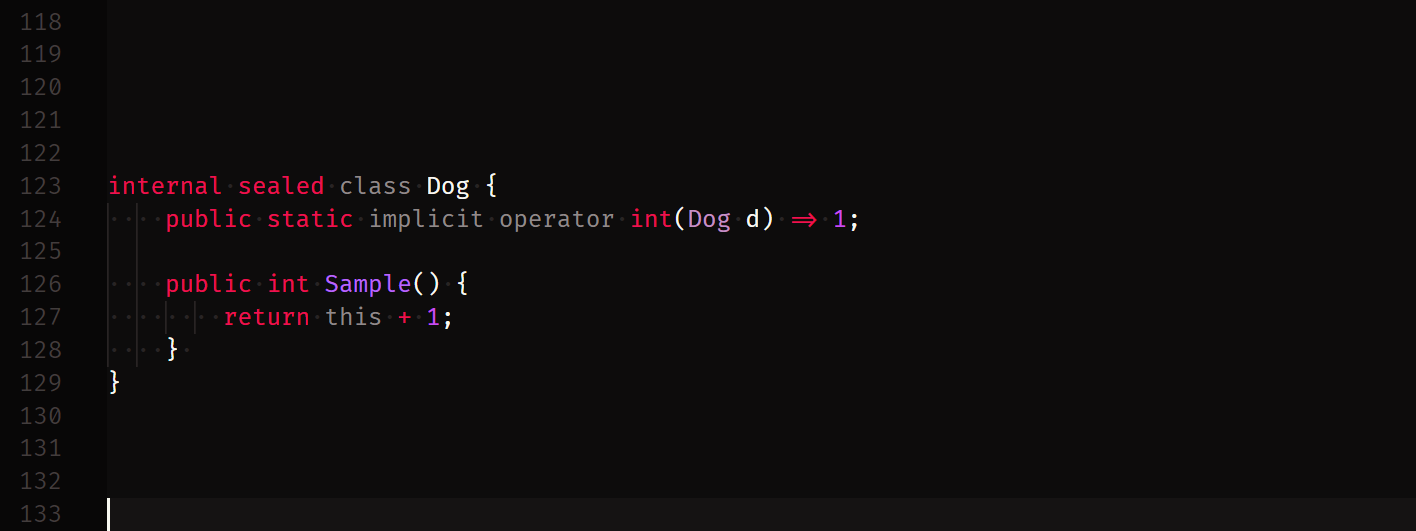Как Borland «профукали все полимеры»

Первая встреча с Turbo Pascal
Начать стоит с самого начала, когда я впервые увидел Turbo Pascal 5.0. Тогда для меня это было что‑то на грани чуда.
Ведь как в те времена делалось «в норме»:

Объектно-ориентированный язык программирования

Первая встреча с Turbo Pascal
Начать стоит с самого начала, когда я впервые увидел Turbo Pascal 5.0. Тогда для меня это было что‑то на грани чуда.
Ведь как в те времена делалось «в норме»:
Функциональное программирование — это очень забавная парадигма. С одной стороны, про неё все знают, и все любят пользоваться всякими паттерн матчингами и лямбдами, с другой на чистом ФП языке обычно мало кто пишет. Поэтому понимание о том, что же это такое восходит больше к мифам и городским легендам, которые весьма далеко ушли от истины, а у людей складывается мнение, что "ФП подходит для всяких оторванных от жизни программок расчетов фракталов, а для настоящих задач есть зарекомендовавший себя в бою проверенный временем ООП".

Хотя люди обычно признают удобства ФП фич, ведь намного приятнее писать:
int Factorial(int n)
{
Log.Info($"Computing factorial of {n}");
return Enumerable.Range(1, n).Aggregate((x, y) => x * y);
}чем ужасные императивные программы вроде
int Factorial(int n)
{
int result = 1;
for (int i = 2; i <= n; i++)
{
result *= i;
}
return result;
}Так ведь? С одной стороны да. А с другой именно вторая программа в отличие от первой является функциональной.
Как же так, разве не наоборот? Красивый флюент интерфейс, трансформация данных и лямбды это функционально, а грязные циклы которые мутируют локальные переменные — наследие прошлого? Так вот, оказывается, что нет.


Надругательство над C#, C++ и HLSL, игрища с булками и буферами, тройная полиглотность, SIMD, пепекторы, DirectX, экономия 800 Тб ОЗУ, новая парадигма программирования, многопроцессность, быстрая степень и многое другое.
В этой части я расскажу, как делал софт на собственном фреймворке, который управляет ядерной подсветкой и механической видеостеной.



После каждой новой статьи с заголовком «ООП — это обман» хочется напомнить: ООП — это не набор шаблонов из книжек, а инженерный подход. Если проект страдает от наследования и DI, возможно, проблема не в ООП. А в том, как вы его применяете.



Добрый день, уважаемые читатели. В данной статье я расскажу о том, как распарсить число, записанное прописью на русском языке.
Умным данный парсер делает возможность извлечения чисел из текста с ошибками, допущенными в результате некорректного ввода или в результате оптического распознавания текста из изображения (OCR).
Для ленивых:
Ссылка на проект github: ссылка.

Хотя уменьшение сегодня уже необязательно, оно всё равно лучше.
На дворе 2021 год, я занимаюсь ремонтом электроники уже на протяжении десяти лет. Свободное от работы время посвящаю изучению 3D-моделирования и печати. Для этих целей в 2018 году были куплены два самодельных FDM-принтера.
В один из дней приходит знакомый, держа в руках плату с большим количеством радиаторов. Предлагает посмотреть краем глаза, почему она не работает. В процессе небольшой дискуссии, соглашаюсь с одной оговоркой, что если за два выходных дня у меня получится погрузиться в проблему, изучить вопрос и выяснить, что это за плата, то я берусь.
Уже вечером этого дня я изучаю плату и узнаю такие слова, как "Asic", майнер, майнинг. Понимаю, что имею на руках плату одного такого устройства, а в данном случае — AntMiner S9.
 Мы хотим помочь миру программного обеспечения лучше познакомиться с инструментами статического анализа кода и повысить качество программного обеспечения. Мы предоставляем возможность бесплатного использования анализатора PVS-Studio студентам в учебных целях, индивидуальным разработчикам и коллективам энтузиастов.
Мы хотим помочь миру программного обеспечения лучше познакомиться с инструментами статического анализа кода и повысить качество программного обеспечения. Мы предоставляем возможность бесплатного использования анализатора PVS-Studio студентам в учебных целях, индивидуальным разработчикам и коллективам энтузиастов.
Consulo — это форк IntelliJ IDEA Community Edition, который имеет поддержку .NET(C# на текущий момент), Java, Javascript(NodeJS), и многое другое. Проект собрал множество открытых плагинов в себе. При этом код остался открытым.


Привет всем поклонникам вселенной Fallout, особенно её первых двух частей. Сегодня речь пойдёт о Fallout 2 — попытки перенести вторую часть Fallout предпринимались не единожды. Есть вот такой интересный ремейк, а ещё есть группа энтузиастов, пытающихся перенести вторую часть Fallout на движок Fallout 4. Я не знаю, в каком статусе находятся эти проекты; подозреваю, что воз и ныне там. Как бы то ни было, намерения самые что ни на есть благие. В этот раз я хочу представить очередную попытку перенести Fallout 2 в 3D, на этот раз на движок Unity.
Почему Unity?
Изначально мой выбор пал на Unreal Engine 5, так как уровень графики и богатый API движка впечатляют. Но я быстро понял, что Unreal Engine 5 — это выбор для AAA-проектов либо для полноценных команд, которые уже собраны и готовы работать. В то время как Unity идеально подходит для энтузиастов-одиночек. Дополнительным обстоятельством послужил мой ноутбук — Unreal Engine 5 он банально не тянет, даже редактор работает со скрипом. В итоге звёзды сошлись и указали на Unity: выбор сделан.

Когда я был начинающим, я мог писать простые приложения на C# и C++. Долго игрался с консольными прогами, пощупал десктопные, и в какой-то момент захотел сделать сайт. Меня ждал большой сюрприз — чтобы делать сайты, одного сишарпа мало. Надо ещё знать жс, хтмл, цсс и прочую фронтовую хрень. Я потратил около недели на эти вещи, и понял — не мое. Я мог написать какой то код на джаваскрипт, но он не содержал типов, и я никак не мог взять в толк — как к этому вообще подходить. Это какое-то игрушечное программирование. Ну и забросил к чертям.
Уже потом, работе на третьей, меня перевели в отдел, где делали веб. Я подумывал уволиться, но мне объяснили — там тайпскрипт, тайпскрипт — это такой сишарп для браузера.
Я согласился, изучил его, и сейчас это один из моих любимых ЯП. Но. Тайпскрипт — это вот вообще не сишарп. Это язык с принципиально другой системой типов. Сложной, мощной, но другой.
